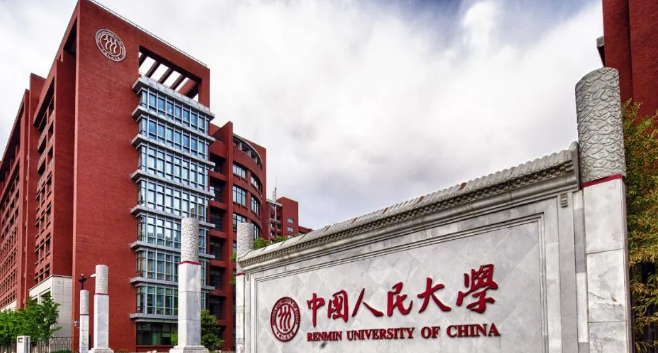Yes, over 100 Chinese universities accept Malaysian UEC results, recognizing them for direct admissions and offering scholarships.
Table of Contents
Recognition by Chinese Universities
-
Chinese universities have high recognition for Malaysia’s Unified Examination Certificate. Students with this qualification are able to apply to a variety of education programs, which places them at an advantage as described in source 34.
-
This information is collected from the Malaysian Examinations Council. Based on the agreement with the Malaysian Qualifications Agency and the Ministry of Education, students are given an opportunity to enroll in over 100 universities in China. By the beginning of 2022, around 117 universities had adopted the program. The key universities involved in this process include Fudan University, and Tsinghua University. The Gaokao exams for university enrollment to China take a lot of time, for example, the recent Gaokao exam was taken in July 2021 to give students the time they need to apply. One of the students who applied to a Chinese university in 2021 and had the UEC qualification said that her peers from other countries began preparations for the Gaokao exams, but her UEC results allowed her to apply to 6 China universities in the field of Engineering and Business as she prepared for future studies. She was confident that the UEC would continue being recognized over the coming years since it had been accepted at the time, and universities had offered to sign agreements to accept the document/email access.
Register to Free Apply Scholarship ,WhatsApp: +86 15066822096
It is considered critical for Malaysian students to have UEC qualification scores mentioned in the websites of recognized universities. Currently, all universities provide additional universities and areas in the top universities that students should target to have an edge over the other students. In all cases, the students should have a certain score or total in their UEC diploma to stand a better chance of gaining admission. To access these universities, students should also have certain documents, for example, family registration certificates and identity cards if they are open for foreign students. For UEC holders in China, these considerations will allow local students to access local scholarships that they are eligible for at the moment. The scholarship includes discounts on university fees between 10%-50%. According to the students, between 20%-30% of total fees are often slashed for foreign students. The scholarships have varying applications, and some of them include total discounts. It is worth understanding that the common requirement set for students to retain their position in any university is to accumulate a general total of 75% from their scores of Economics and Mathematics, which the UEC qualification often champions for students. There is usually no second examination after the UEC diploma suitable for other textbook-based courses at SPM level. The score requirements should not be too low, and a mean score of approximately 70% should be allowed. This information allows students to understand the process of applying to Chinese universities, and as a result of students’ efforts, scholarships will continue being issued to make the program even attractive.
-
This program is suitable for students with UEC Challonge qualification. The reasons why universities accept this diploma is its comprehensive, accredited, challenging, and high passing rate. Students normally look for programs which are considered easy to pass; however, application programs are looking for students, who are willing and ready to provide high competition, and therefore students with UEC are a perfect choice as they lookout for new strategies. Not only did the university, therefore, adopt this program because they are recognized, but they benefit as well, since the universities have been able to enjoy four years of reforms due to the score stability and the ability of the students to perform well in their examinations. In the coming years, it is expected that the Gaokao scholarship will begin targeting UEC Challonge students across other universities in Kenya.

Subject Requirements
Chinese universities have set subject requirements for Malaysian UEC applicants as a way to underline the importance of relevant academic preparation in the field chosen for study. Specifically, subject requirements are intended to make sure that students have the foundational knowledge to succeed in the educational program they choose. For example, if a student with a UEC certificate wants to study engineering at a Chinese university, they need to have high scores in Mathematics and a Science-related subject from their UEC. Typically, such a discipline expects at least A grades in the two subjects to show that a student can handle the academic work of rigorous engineering programs. Similarly, for humanities majors, such as Literature or History, a student should have high grades in relevant language and social science subjects.
Therefore, it is easy to evaluate whether a student meets these requirements or not. Usually, universities provide special requirements for applicants on their websites, indicating subjects and grades expected from a student. For example, Beijing Normal University states that for Malaysian UEC applicants, the standard requirement is to have B4 for subjects related to the major the student chooses. Therefore, there is clarity from the university’s side as to what a student needs to achieve academically. It also equally guides the student’s preparation and understanding of their capabilities in the context of the requirements. Furthermore, in addition to having high scores in relevant academic fields, students are often required to pass some kind of practical assessment or provide a subject-related portfolio. For many art and design programs, they require portfolios that demonstrate a student’s skills and creativity that scores cannot fully show. For instance, the requirement for a portfolio obliges students to spend much time and effort on preparing a substantive demonstration of their abilities side by side with the results from the written subjects.
Language Proficiency
When applying to Chinese universities, language proficiency is one of the crucial aspects for Malaysian UEC students, especially since many programs are taught in Mandarin. Moreover, to ensure successful integration and promote development in a new academic setting, students are often required to provide proof of their Mandarin proficiency. Hanyu Shuiping Kaoshi or HSK, China’s official Mandarin proficiency test, is typically used to measure the language abilities of applicants. UEC includes Chinese language studies, which means that the program well-prepares Malaysian students to meet the requirements. However, as the level of Chinese taught in UEC programs may vary, some universities establish specific HSK test scores as requirements for admission.
To enter a Mandarin-taught program, a university may ask to submit an HSK level 5 score, indicating upper intermediate proficiency . It ensures that students are able to follow university lectures, read academic books and articles, and complete assignments without running into comprehension difficulties. To meet these requirements, many students undertake specific measures, such as taking additional language courses or attending intensive Chinese language programs. For example, if a Malaysian UEC student plans to enroll in a Business program at Shanghai University, they may decide to take part in a summer language camp to improve their HSK score. As a result, a student will have their HSK results and necessary vocabulary to feel confident in their comprehension and speaking abilities upon starting the program.
According to Diep, Cao, and Safron, such focus on language proficiency is strategic since it ensures the academic and social integration of international students. Those who are more proficient usually have better comprehension of their academic programs; in addition, they feel more comfortable engaging in university life, joining different clubs, and socialising with their peers to build networks. Meanwhile, universities in China also offer language preparation for international students, which allows to identify the gaps in knowledge and offer support programs. These preparatory courses are a full-time degree, which means that students will also get accustomed to the new education system and life in a different country.

Direct Admission and Scholarships
Direct admission and scholarships significantly facilitate the process for Malaysian UEC students for applying to Chinese universities. Owing to the more rigorous academic standards of the UEC, many Chinese universities have introduced pathways to direct admission. This process allows students to avoid required examinations, such as the Gaokao, which simplifies the application procedure and saves students’ time and the associated testing process stress. For example, a university in Beijing offers students with top-tier UEC results, who are often in the top 10% of their class, the opportunity to directly apply to its undergraduate programs. In most cases, these students are required to submit only their UEC scores and the regular materials, such as recommendation letters and personal statements, to the university.
Furthermore, several Chinese universities offer scholarships that are available only for UEC graduates. These scholarships can cover most of the students’ tuitions fees costs and sometimes also housing, as well as a stipend. As an illustration, a university in Shanghai has a scholarship program that covers the 70% of the tuition fees for any UEC student with a record of exceptional performance. While this financial aid allows more Malaysian students to apply for higher education in China, not least because their pool of undergraduates offers increased diversity, the financial advantage is not the only benefit of the scholarship. Scholarships function as acknowledgment of majors’ achievements, both academic and personal, which can also be seen as a reason more Malaysian students could consider applying to Chinese educational programs. It is important to note that many students apply for these opportunities and engage in additional preparations. These include students maintaining consistently high grades during their high school years, participating in extracurricular activities, and gaining certificates of achievement, such as those offered for leadership, sports, or arts.
Additional Entrance Exams
Although Chinese universities generally accept the Unified Examination Certificate, Malaysian students are sometimes required to take additional exams as part of the university admission process. These exams are designed to evaluate an applicant’s particular skills and knowledge, which are critical for their field of study. The common practice is to require specialized international students, such as those studying medicine or architecture, to take these exams. For example, to enter the medical program at the Guangzhou-based university, a possible student is required to take an entrance exam in advanced biology and chemistry. It is because of the very high standards of this university and the need to ensure the best possible specialized skills in the areas important for a respective field. Such exams usually have a structure and questions similar to the Chinese Gaokao, offering challenging high-level questions in field-related subjects. These additional exams results are evaluated together with UEC results to determine the student’s suitability for a university. Most students pass them successfully, as they have detailed knowledge of the format and challenging content of these exams.
In my case, we also have taken additional examinations similar to the ones I have described above. However, the range of subjects was based on engineering specialization and included advanced maths and physics topics. To be successful in it, I have taken a six-month preparation course offered by a tutoring center in Kuala Lumpur. These courses are rather popular in Malaysia, targeting students with high academic results in the general course but lack immersion in specialized subjects. For example, a student interested in engineering usually deals with basic mathematical problems in the UEC programs. These programs intend to fill these gaps and help students develop a fundamental understanding of specialized subjects at a high level. Taking such courses help to minimize the differences in the pre-university courses in Malaysia and China and realize the academic level required to be successful at a Chinese university.
Bilateral Educational Agreements
Bilateral educational agreements between Malaysia and China serve as a valuable mechanism facilitating the application process for Malaysian UEC students applying to Chinese universities. Such agreements comprise formalized mutual understandings that UEC constitutes a valid basis for entry, and there exist various undertakings aimed at promoting educational exchange and cooperation. At the core of these agreements lies mutual recognition of academic credentials, meaning that UEC results can be accepted directly by a Chinese university. Ultimately, the critical implication of this feature is the simplification of the entry process, enabling Malaysian students to apply to a large number of programs in China without other qualification assessments. Second, these documents, due to their mandatory character, induce certain exchange opportunities.
According to a general pattern, Malaysian students may go to universities in Beijing and participate in summer research programs where they can overview advanced research practices and get new perspectives. In this way, such agreements increase the educational value provided to UEC students and contribute to enhancing academic relations between the countries. Finally, as a side effect, these agreements lead to enhanced support systems since both low-level components such as pre-departure orientations and advanced courses on integration into a new environment. Beyond the student level, these agreements impact higher overall education practices and policies. For instance, following these bilateral meetings, the visa operation policy was modified, hence shortening the waiting time and reducing the necessary documentation.

